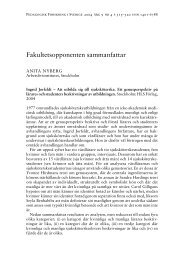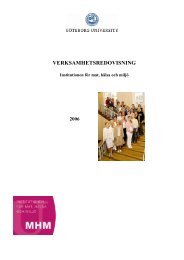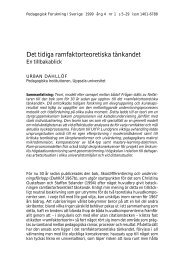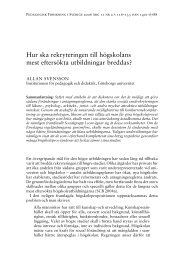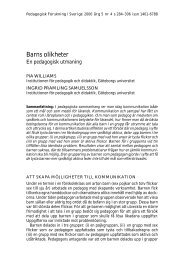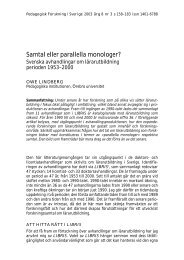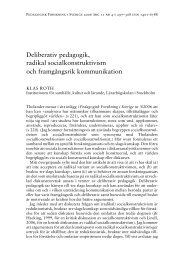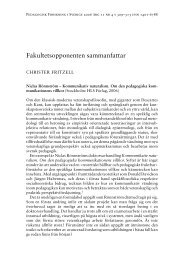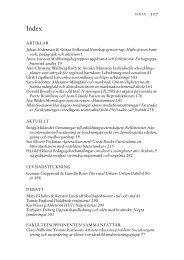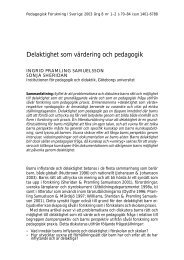University of Oslo Workshops June 29-30 Conference July 1-3 ...
University of Oslo Workshops June 29-30 Conference July 1-3 ...
University of Oslo Workshops June 29-30 Conference July 1-3 ...
You also want an ePaper? Increase the reach of your titles
YUMPU automatically turns print PDFs into web optimized ePapers that Google loves.
and teacher competence. At the within-level the effect was reduced, whilst at the between<br />
level the effect almost completely disappeared. Thus, positive school and classroom<br />
climate appears to a large degree to be a reflection social selection and teacher<br />
competence.<br />
Keywords: school climate; classroom climate; reading achievement; PIRLS; two-level<br />
structural equation modeling<br />
<br />
The Interplay between School, Teacher, Family and Student Factors and their<br />
Relationships to Reading Literacy in Italy<br />
Fabio Alivernini, National Institute for the Educational Evaluation <strong>of</strong> Instruction and Training,<br />
INVALSI, Italy<br />
Fabio Lucidi, Department <strong>of</strong> Social and Development Psychology, <strong>University</strong> <strong>of</strong> Rome<br />
‘La Sapienza’, Italy<br />
Sara Manganelli, National Institute for the Educational Evaluation <strong>of</strong> Instruction and Training,<br />
INVALSI, Italy<br />
Bruno Losito, Roma Tre <strong>University</strong>, Italy<br />
PIRLS 2006 collected data about reading literacy and about factors connected to school,<br />
family and student context for Italian fourth grade students. The aim <strong>of</strong> the present study is<br />
to examine, in Italian data, the interplay between school, teacher, family and student<br />
factors, and their relationships to reading literacy. A structural equation model comprising<br />
school, teachers, parents, and pupils variables is tested. This model as a whole accounted<br />
for 37% <strong>of</strong> variance in reading literacy in Italian fourth grade pupils. Home variables<br />
accounted for 18% <strong>of</strong> variance, students' variables for 14% and school and teacher<br />
variables for 5% <strong>of</strong> variance. An important part <strong>of</strong> home variables effect is related to the<br />
direct and indirect influence (through other variables) <strong>of</strong> educational resources, whereas<br />
the importance <strong>of</strong> economic resources seems to be very small in total. Variables connected<br />
with students seem to strongly influence the effect <strong>of</strong> home variables. Finally as concerns<br />
school and teachers variables, material resources available in schools have a very small<br />
effect on reading literacy. The most important variable in this latter context proves to be the<br />
time spent by students in reading activities at school.<br />
Keywords: secondary analysis, reading achievement, structural equation modeling, PIRLS<br />
2006, background indices<br />
52



